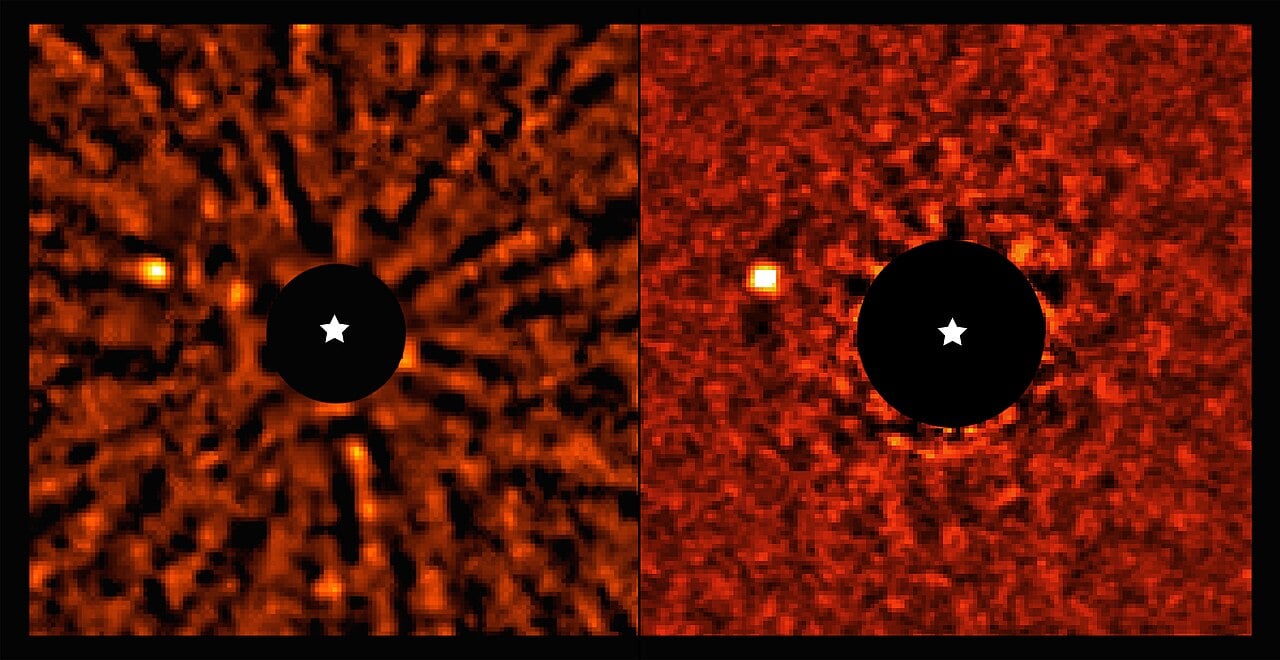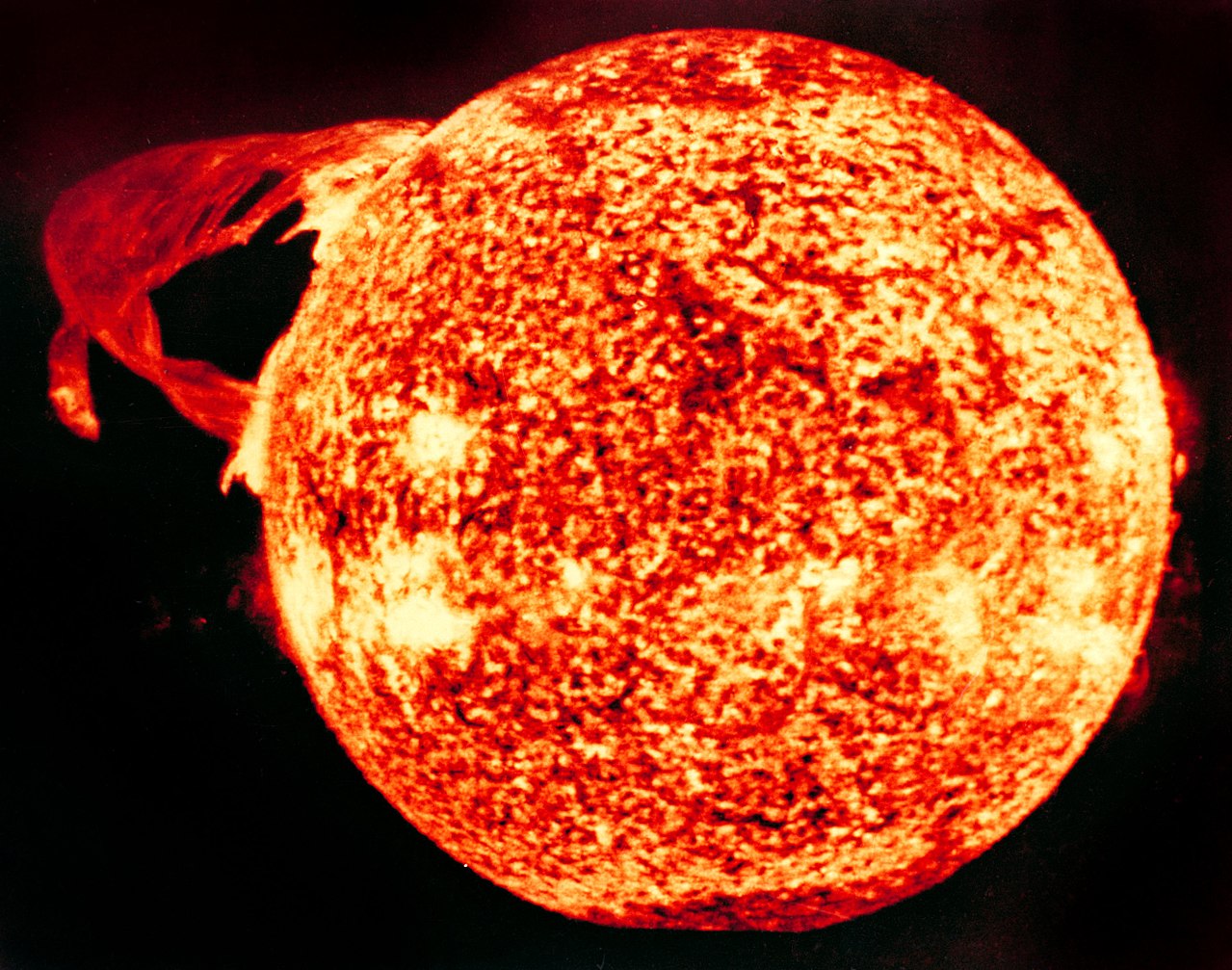When astronomers search for potentially habitable planets beyond our Solar System, they typically focus on whether these worlds orbit at the right distance from their stars to maintain liquid water. But new research reveals that violent flares and eruptions from host stars may be equally important in determining whether these distant worlds could support life.
 Two images of a Jupiter-like exoplanet that orbits the star AF Leporis. (Credit: ESO/MESA)
Two images of a Jupiter-like exoplanet that orbits the star AF Leporis. (Credit: ESO/MESA)
Scientists have long known that our Sun occasionally unleashes powerful flares that can disrupt satellites and create spectacular auroral displays on Earth. Now, researchers are discovering that similar stellar outbursts around other stars can dramatically reshape the atmospheres and climates of orbiting planets, particularly those circling smaller, more active red dwarf stars like TRAPPIST-1.
Using sophisticated computer models that simulate entire planetary atmospheres in three dimensions, researchers examined how stellar flares affect planets similar to TRAPPIST-1e, a potentially Earth-like world. They tested four different scenarios from completely quiet stars to extremely active ones that unleash frequent, powerful flares.
 Artist's impression of TRAPPIST-1e planet, as of 2018 (Credit: NASA/JPL/Caltech)
Artist's impression of TRAPPIST-1e planet, as of 2018 (Credit: NASA/JPL/Caltech)
The results revealed surprising and complex atmospheric responses. When stellar flares strike a planet's atmosphere, they trigger cascading chemical reactions that cool the upper atmosphere while simultaneously warming the middle and lower regions. This occurs because flare-induced molecules like nitrogen oxide and carbon dioxide radiate heat away from the upper atmosphere, while greenhouse gases like nitrous oxide and water vapour accumulate lower down.
Perhaps most dramatic were intense stellar flares that can whip up powerful winds in a planet's middle-layer atmosphere. The simulations showed wind speeds increasing by up to 40 meters per second, stronger than hurricane-force winds on Earth, particularly on the planet's nightside between 30 and 50 kilometres above the surface.
 Image of the Sun taken on 19 December 1973, during the third and final manned Skylab mission, shows one of the most spectacular solar prominences ever recorded, spanning more than 588,000 kilometres across the solar surface. (Credit: NASA)
Image of the Sun taken on 19 December 1973, during the third and final manned Skylab mission, shows one of the most spectacular solar prominences ever recorded, spanning more than 588,000 kilometres across the solar surface. (Credit: NASA)
The research also revealed that stellar flares can severely impact ozone, the protective molecular shield that guards against harmful ultraviolet radiation. Repeated flaring can deplete or even completely destroy a planet's ozone layer over time, with the severity depending on how frequently and energetically the host star erupts.
Interestingly, planets orbiting moderately active stars such as those that flare regularly but not constantly, showed the greatest climate variability. These worlds experience dramatic atmospheric changes because their ozone layers have time to recover between stellar outbursts, creating a cycle of destruction and renewal that drives significant weather patterns.
These findings have profound implications for understanding which exoplanets might harbor life. Since red dwarf stars make up about 75% of all stars in our Galaxy and remain active for billions of years, stellar flares could be a dominant force shaping atmospheric conditions around the most common type of potentially habitable worlds. Over the coming years and as next-generation space telescopes come online, scientists will be able to observe these stellar weather effects in real exoplanet atmospheres, providing crucial insights into the complex relationship between stars and their planetary companions in the search for life beyond Earth.
Source: Effects of Transient Stellar Emissions on Planetary Climates of Tidally Locked Exo-Earths

